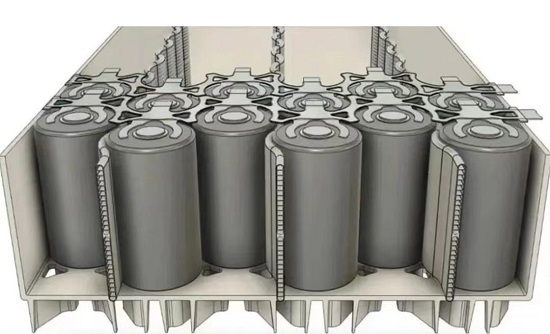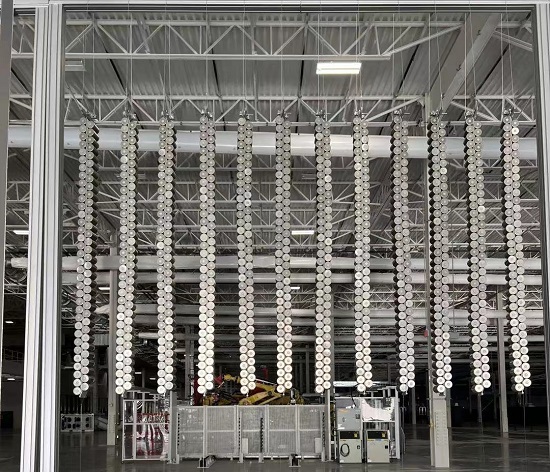BMW enters the large cylindrical battery market, and 4680 batteries continue to heat up.
Under the effect of Tesla, it is expected that more car companies will follow the technical route of large cylindrical lithium batteries in the future as a reliable way to enhance their comprehensive competitiveness and accelerate the transformation of electrification.
Acceleration of electrification
The acceleration of electrification of global car companies is opening up the market growth space for large cylindrical batteries.
During its first-quarter 2022 earnings presentation, BMW announced the launch of its new Neue Klasse pure electric vehicle platform. The platform will go into production around 2025 at its new plant in Debrecen, Hungary, and will produce all of BMW’s electric models.
It is reported that BMW plans to use a new cylindrical battery on the Neue Klasse platform, which can reduce the cost of its battery by 30% and has a higher energy density than the battery currently used by Tesla.

More adoption of 4680
Tesla currently uses two types of cylindrical batteries, 18650 and 21700, and is accelerating the introduction of 4680 batteries to replace its existing cylindrical batteries, thereby improving energy density and reducing manufacturing costs.
Combined with BMW’s goal of producing mid-to-high-class models on a new platform and using new batteries to reduce costs, it means that BMW’s new cylindrical batteries are likely to be large cylindrical batteries including 4680.
Compared with BMW’s plan, Tesla’s introduction of large cylindrical batteries is faster, and the market demand is strong.
In January 2022, Tesla announced that it has produced more than 1 million 4680 batteries at its Fremont, California factory, and the battery yield has increased from the initial 27% to 90%, indicating that its 4680 battery mass production process has gone further.
Recently, Tesla has sent emails to Model Y pre-orders near the Texas Gigafactory, informing them that they can change their orders to the new Model Y all-wheel drive version, which is equipped with Tesla 4680 batteries and CTC structured battery packs.
This indicates that Tesla’s 4680 battery has officially entered the commercialization stage, and mass production applications are imminent.
In fact, cylindrical batteries have already taken a place in the power battery market by virtue of their product standardization and low-cost advantages, and Tesla and BMW’s active introduction of large cylindrical batteries shows that they are optimistic about the application opportunities of large cylindrical batteries in the field of mid-to-high-class electric vehicles. The main purpose of it is to reduce vehicle cost and improve product performance.
Demand will increase significantly
Under the Tesla effect, it is expected that more car companies will follow the large-cylinder technology solution in the future as a reliable way to enhance their comprehensive competitiveness and accelerate their electrification transformation.
With the increase in the number and sales of electric models equipped with large cylindrical batteries, the market demand for large cylindrical batteries from OEMs will increase significantly, which will provide battery companies with good opportunities for large cylindrical battery development and production capabilities, and drive the industrial chain of cylindrical batteries develops rapidly.
At present, Tesla has planned to produce 4680 batteries by itself in four super factories in California, Texas, Nevada, and Berlin, Germany. According to previous plans, its annual output of 4680 batteries will reach 100GWh in 2022 and 3TWh in 2030.
Opportunities
Although Tesla takes self-produced batteries as a core measure to achieve its 20 million electric vehicle sales target by 2030 and ensure the security of battery supply, it is still looking for cooperation opportunities with external battery companies in the joint development and production of 4680 batteries.
Tesla currently has two cylindrical battery suppliers, Panasonic and LG New Energy. In order to meet Tesla’s huge market demand in the future, Panasonic and LG New Energy are also accelerating the pace of R&D and production of 4680 batteries, intending to take the lead in obtaining the opportunity to supply Tesla.
Panasonic has built a prototype production line for the 4680 battery at its Wakayama factory. There is also the possibility of a new battery factory in the United States dedicated to the production of 4680 cells, with production scheduled to begin in 2023.

Tesla battery day, 4680 lithium batteries
LG New Energy is also developing 4680 battery cells and is building a pilot production line at its Ochang factory in South Korea.
The second CEO of LG New Energy recently met with Tesla executives to discuss power battery cooperation, including discussing when and where LG New Energy will produce 4680 batteries to supply Tesla.
In addition, Tesla is also looking for other manufacturers to cooperate in the production of 4680 batteries, including China’s CATL
In order to ensure sufficient supply of batteries, BMW previously announced that BMW will increase the purchase of batteries for the fifth-generation eDrive electric drive system from the original plan of 12 billion euros to more than 20 billion euros.
This means that when BMW’s new platform is mass-produced, it will have a huge procurement demand for large cylindrical batteries, which in turn will provide its battery suppliers with good development opportunities.
BMW currently has 4 battery suppliers including CATL, Samsung SDI, etc. BMW said the new cylindrical batteries will be manufactured by existing battery suppliers.
This means that the above-mentioned battery companies will have the opportunity to obtain matching supply opportunities for BMW’s future large cylindrical batteries.
More adopters
In addition to Tesla and BMW, car companies such as Porsche have also successively released clear signals for the application of large cylindrical batteries.
According to customer demand combined with industry information statistics, by 2025, large cylindrical lithium battery cells will account for at least more than 30% of the global power battery market share, exceeding the total global power battery demand in 2021.
At present, there are many large-scale new energy vehicle companies. In the next 5-10 years, it has been determined that the economical electric vehicles adopt prismatic lithium iron phosphate batteries, and the mid-to-high-class EVs adopt ternary + silicon large cylindrical batteries.
Driven by the demand of high-class car companies such as Tesla, BMW and Porsche, the large cylindrical battery cells may attract more electric car companies and battery companies. And some domestic battery companies with relevant technical reserves are expected to occupy the first-mover advantage in this round explosion of large cylindrical battery market demand, and the local industry chain will also benefit from it.
Among them, the large cylindrical battery will promote the further development of the high-nickel battery market, and is expected to drive the increase in the penetration rate and consumption of main and auxiliary materials such as high-nickel cathodes, silicon carbon anodes, lithium supplements, carbon nanotubes, and LiFSI.
In addition to the material system, the large cylindrical battery adopts a new configuration design, the manufacturing threshold is raised, and the precision requirements for laser die-cutting, laser welding and other processes are increased.
Core focus topics:
- Industrialization and application scenarios of 4680 large cylindrical batteries
- Intelligent Manufacturing Solution for Large Cylindrical Batteries with Full Tabs
- Dry electrode process and equipment matching
- Application and evolution trend of high nickel materials for large cylindrical batteries
- Application and Industrialization of Silicon-Based Anode
- Industrial application of new lithium salts Manufacturing
- Revolution of Large Cylindrical Battery Structural Parts





